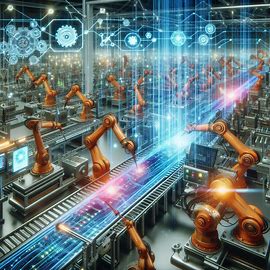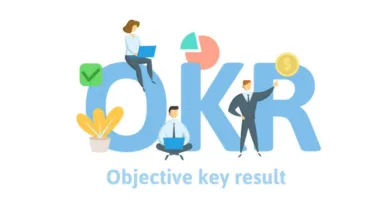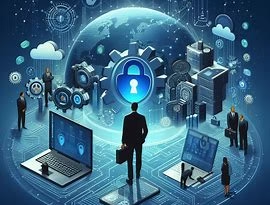The Internet of Things (IoT): A Revolution in Connectivity
In an era where technology intertwines with almost every aspect of our lives, the Internet of Things (IoT) emerges as one of the most transformative forces. But what exactly is IoT, and how is it reshaping industries, homes, and our day-to-day experiences?
What is the Internet of Things (IoT)?
The Internet of Things refers to the vast network of physical devices connected to the internet, all collecting, sharing, and analyzing data. These devices range from everyday household items like refrigerators and thermostats to complex machinery in factories and smart cities. The defining feature of IoT is its ability to gather data from the environment, communicate that data over the internet, and use it to make decisions or automate tasks.
The Evolution and Expansion of IoT
The concept of interconnected devices isn’t new, but the rapid advancements in wireless technology, sensors, and data processing have propelled IoT into mainstream use. Today, it’s hard to imagine a world without IoT—whether it’s the smart lock on your door, the wearable tracking your fitness, or the network of sensors monitoring traffic patterns in a city.
Key Drivers of IoT Growth:
- Advancements in Connectivity: The widespread availability of high-speed internet, coupled with the rollout of 5G networks, has made it easier for devices to communicate seamlessly.
- Miniaturization of Sensors: Sensors have become smaller, cheaper, and more efficient, enabling their integration into almost anything.
- Cloud Computing: The ability to store and process vast amounts of data in the cloud has been pivotal for the IoT ecosystem.
Impact of IoT on Industries
The influence of IoT spans across various sectors, bringing about efficiency, cost savings, and innovation.
- Manufacturing (Industrial IoT): Factories are becoming smarter with IoT. Predictive maintenance, real-time monitoring, and automation are reducing downtime and increasing productivity.
- Healthcare: From remote patient monitoring to smart medical devices, IoT is revolutionizing healthcare by providing personalized and timely care.
- Smart Homes: The rise of smart home devices, like voice assistants, smart lighting, and security systems, is making our living spaces more convenient and secure.
- Transportation: IoT is at the heart of the autonomous vehicle revolution and smart traffic management, leading to safer and more efficient transportation systems.
- Agriculture: IoT-powered smart farming techniques are optimizing water usage, crop monitoring, and livestock management, leading to increased yields and sustainability.
Challenges and Considerations
While IoT offers immense potential, it also comes with its set of challenges:
- Security Concerns: As more devices connect to the internet, the risk of cyberattacks increases. Ensuring robust security measures is crucial.
- Data Privacy: The vast amount of data collected by IoT devices raises concerns about how this data is used and who has access to it.
- Interoperability: With numerous manufacturers and platforms, ensuring that IoT devices can communicate and work together seamlessly is a challenge.
The Future of IoT
The future of IoT is bright, with estimates suggesting that by 2030, there could be over 125 billion IoT devices globally. This growth will be driven by advancements in artificial intelligence, edge computing, and blockchain technology, which will address current challenges and unlock new possibilities.
As we move forward, IoT will continue to blur the lines between the physical and digital worlds, creating a more connected, efficient, and intelligent environment. Whether you’re a business leader, a tech enthusiast, or someone curious about the future, IoT is a trend you can’t afford to ignore.
In conclusion, the Internet of Things is not just a buzzword; it’s a revolution that’s already here, changing how we live, work, and interact with the world. As we continue to explore its potential, one thing is clear: IoT is paving the way for a future where connectivity is key to innovation.



